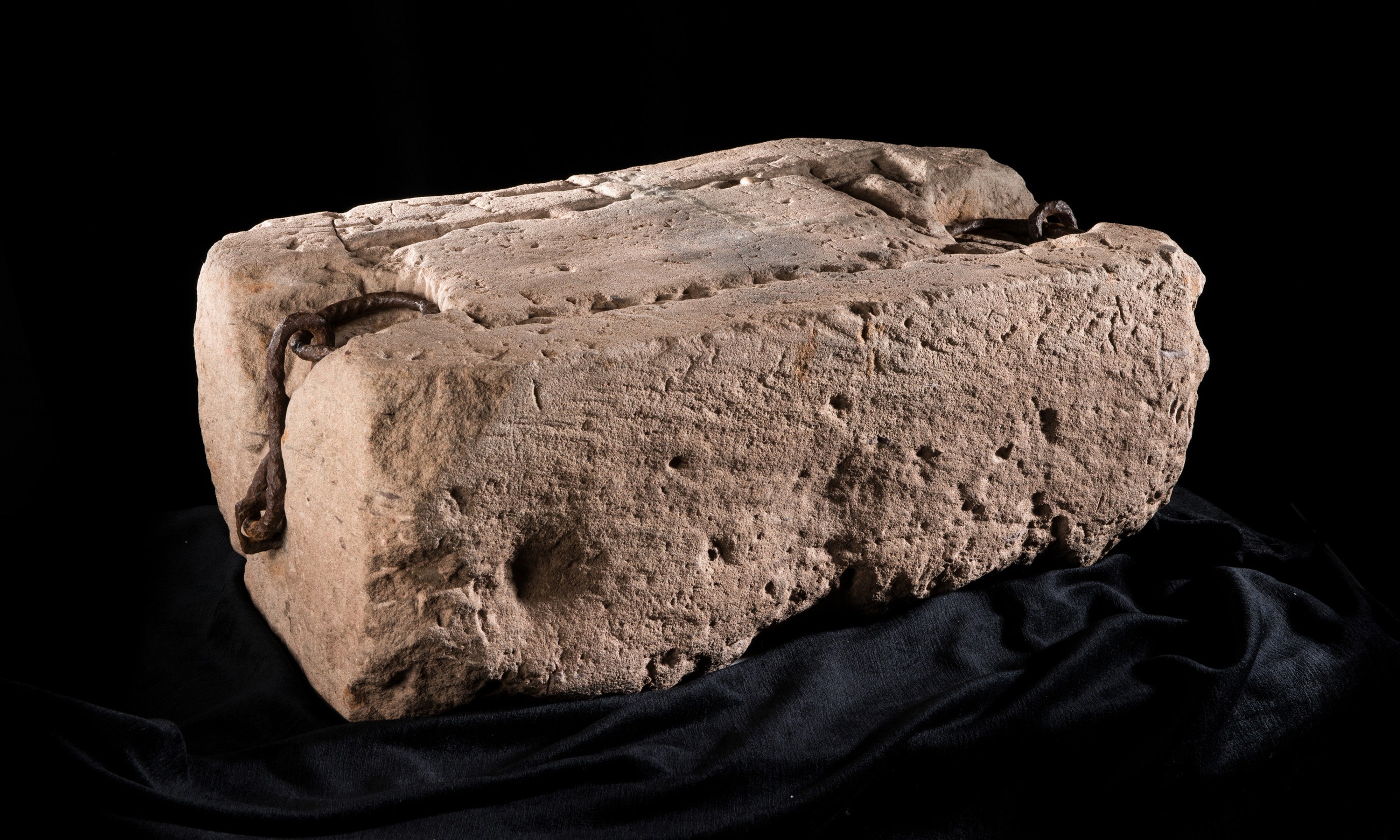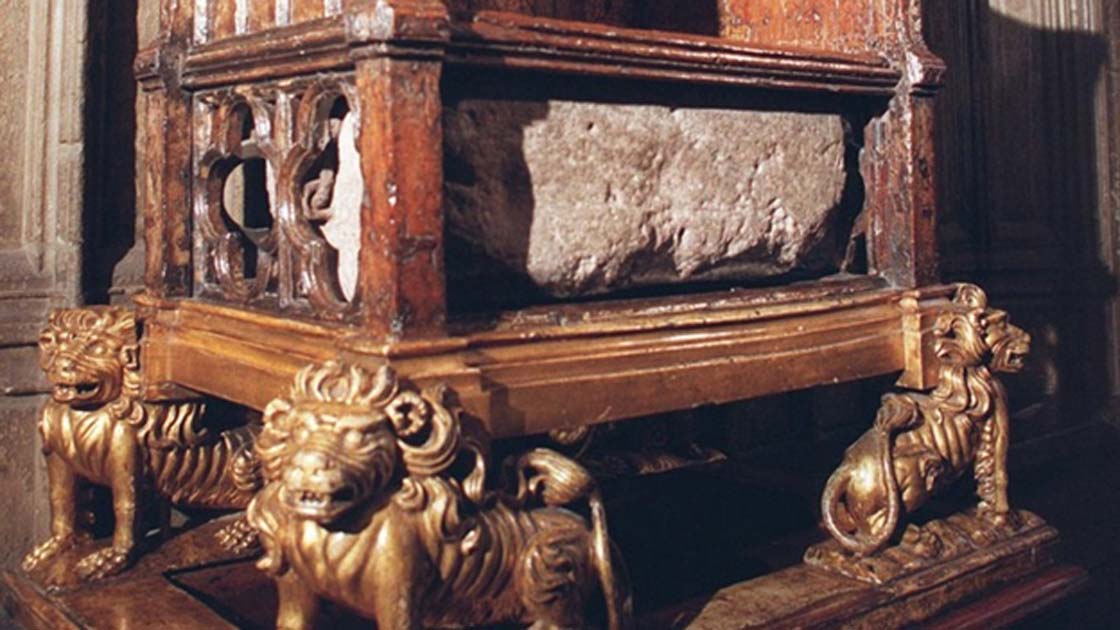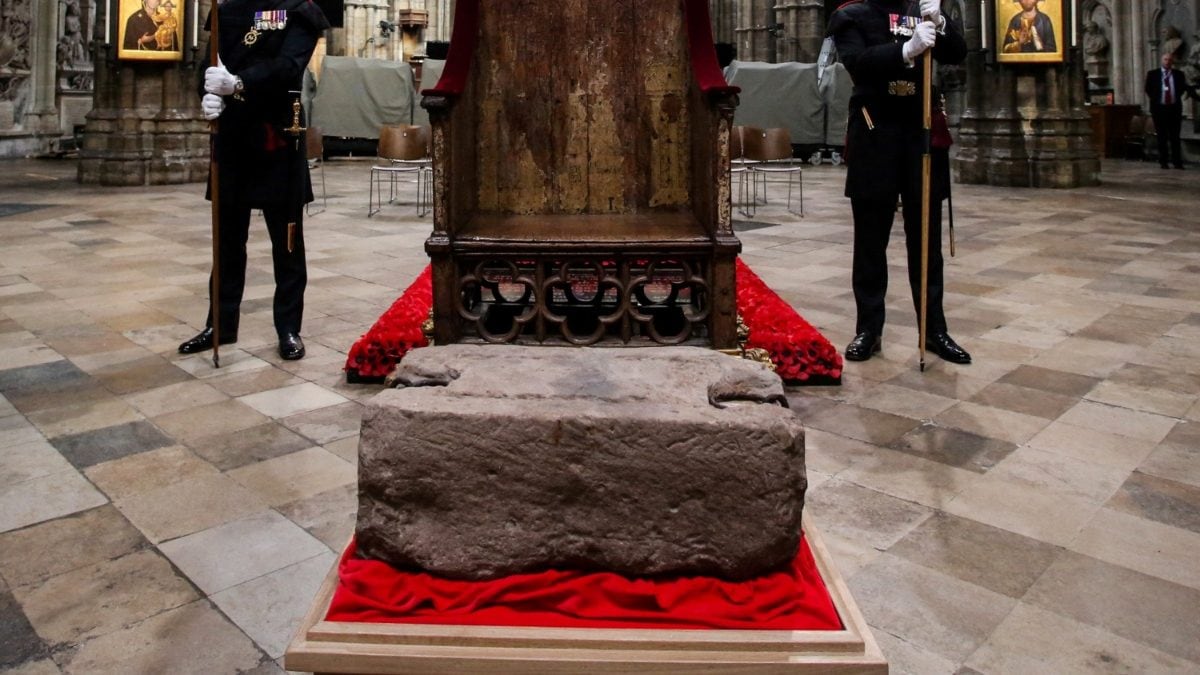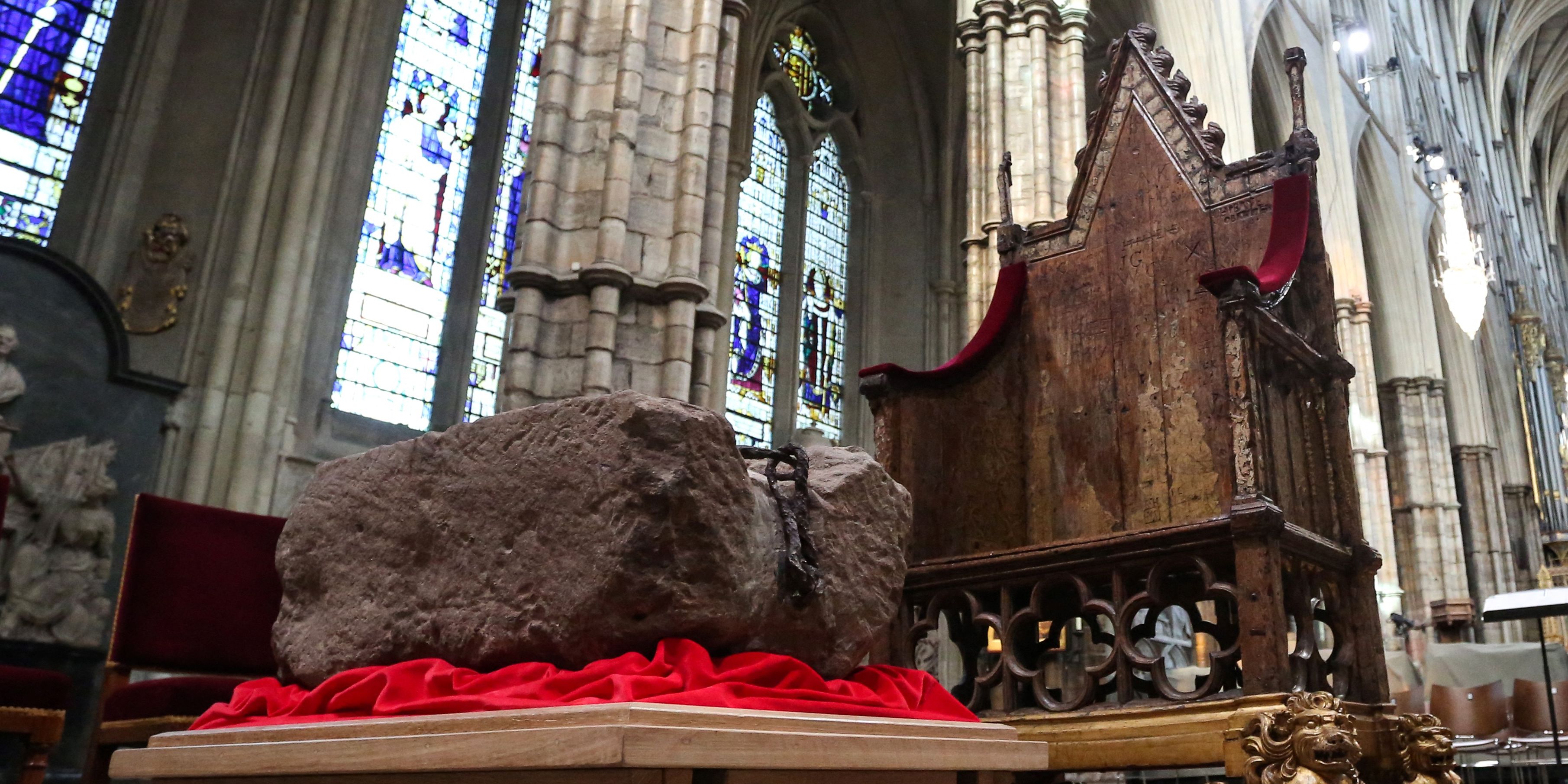When Britain’s King Charles III is crowned in London on May 6, he will sit on an ancient chair housing a 335-pound boulder cloaked in mystery. Known as the Stone of Scone, this artifact has been used for British coronations since the late 14th century. Although its origins and age remain unknown, the stone’s enigmatic past and its significance in British and Scottish history make it a fascinating subject for exploration.
The Origins of the Stone of Scone

Legend traces this rectangular slab to Palestine 3,000 years ago, suggesting it was used as a pillow by the biblical figure Jacob. However, scientists believe the stone is more likely from Scotland. This sandstone artifact is among Scotland’s most prized treasures, used to crown Scottish kings until it was stolen by England in 1296.
A Storied Journey

After King Edward I conquered Scotland, he moved the stone to Westminster Abbey, where it was fitted into King Edward’s Chair. Since the late 14th century, all English and British sovereigns have been crowned upon this chair. Despite its relocation, the stone’s Scottish roots were never forgotten.
In 1996, the stone was returned to Scotland, amidst growing support for Scottish devolution. Today, it resides at Edinburgh Castle, where tourists can admire it in the castle’s Crown Room. Visitors to the lavish Scone Palace, 33 miles north of Edinburgh, can kneel upon a replica of the stone, connecting with its storied past.
Stealing the Stone

The last time the stone was used for a coronation was for Queen Elizabeth II in 1953. However, it nearly missed the event due to a bizarre caper three years earlier. In 1950, four Scottish students stole the stone from Westminster Abbey and took it to Arbroath Abbey, about 80 miles north of Edinburgh. After negotiations between the Scottish and English governments, the stone was returned to London in time for the coronation.
Scientific Insights and Ongoing Mysteries
Upon its return to Scotland, scientific research established that the stone’s geology was local to the region near Scone. Despite this, the stone’s full history remains elusive. Recent studies involving 3D modeling and X-ray examinations by Historic Environment Scotland (HES) have provided further evidence of the stone’s Scottish origin, but many questions remain unanswered.
Legends and Kingship

The Stone of Scone is deeply intertwined with legends of kingship and the emergence of Scotland as a nation. According to historical sources like the Scotichronicon, inauguration ceremonies have taken place at Scone since at least the late ninth century. The stone was believed to bear an inscription that read: “As long as fate plays fair, where this Stone lies, the Scots shall reign.”
Conclusion
The Stone of Scone’s journey from a legendary artifact to a symbol of national pride is a testament to its enduring significance. Whether in Edinburgh, Scone, or Westminster, the stone continues to captivate and connect people with its mysterious past and royal legacy. As it returns to Edinburgh Castle after King Charles III’s coronation, the stone remains a powerful emblem of Scotland’s rich history and its indomitable spirit.



